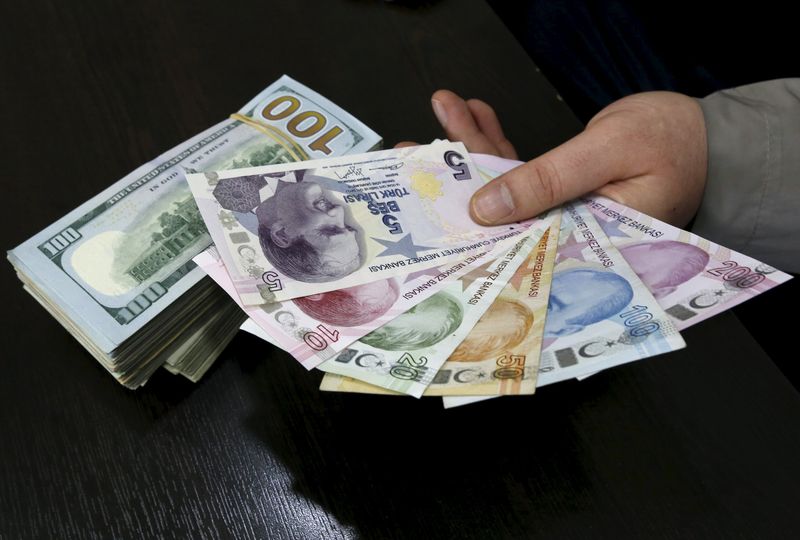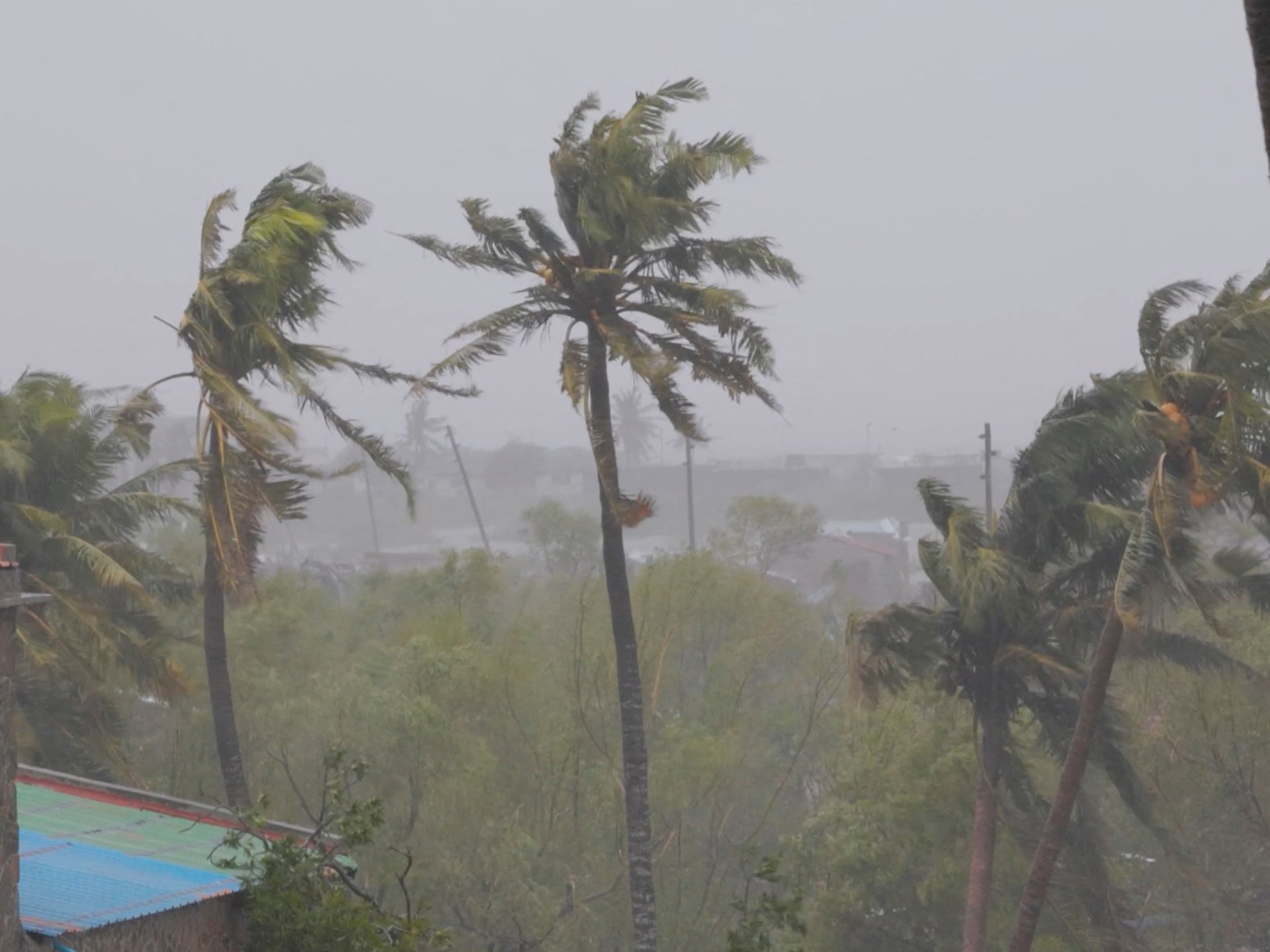In 2006, the British artist Hurvin Anderson painted his first barbershop scene. In “Barbershop,” reflections from the mirrors above a worktop create a series of rectangular patterns, like an abstract painting. In front, two slightly disordered chairs sit surrounded by scraps of hair, as if the clients have only just left, and the viewer is next to sit down.
The scene is based on an establishment in Anderson’s hometown, Birmingham, which the 58-year-old has painted numerous times over the last decade and a half, as he has similarly returned to a number of barbershops in London and Jamaica. Many of these works are now on view, until Nov. 5, at “Hurvin Anderson: Salon Paintings” at the Hepworth Wakefield, a museum in northern England. (The name of the show, chosen by Anderson, refers to both hair salons and the historical art exhibitions in Paris.)
Over the past 25 years, Anderson — who was nominated for the Turner Prize in 2017 — has focused on painting the spaces Black people occupy, especially members of the Windrush generation, like his parents, who were encouraged to migrate to Britain from the Caribbean to help the country rebuild after World War II. (The name refers to the HMT Empire Windrush, which brought passengers from the Caribbean to England in 1948.) He has also explored his own experiences living and growing up in Britain as the youngest of eight siblings, and the only one born in Britain.
When the Windrush generation first arrived, “Caribbean life in Britain was one identity in the home and another when they stepped outside,” he said in a recent interview at the Hepworth, dressed casually in a white shirt and black trousers, his long hair neatly tied back into a ponytail. This was especially apparent in how Caribbeans decorated interior spaces, Anderson added: “They have a certain aesthetic and it almost describes them.”
Anderson is also known for his striking landscape paintings that draw on varying perceptions of the Caribbean, but more than any other subject matter, Anderson has returned to the interior space of the commercial Black barbershop, fascinated, he said, by the space aesthetically and by how it functions within Black communities.
“Peter’s Series,” begun in 2007, is set in an attic owned by Peter Brown, who transformed it into a makeshift barbershop that Anderson’s father frequented. The paintings explore the ways Caribbean immigrants during the 1950s and 60s used their homes to gather. With white barbers often reluctant to cut Black hair, it meant communities created their own spaces.
Anderson initially described his barbershop interiors as “slightly chaotic” before adding that, despite this apparent randomness, the spaces are curated in a distinct way, most noticeably in the posters on the walls.
In the museum, Anderson’s oldest barbershop paintings are hung almost opposite the most recent works, allowing visitors to see how the series has evolved.
In a recent piece, “Skiffle,” 2023, a poster depicts followers of the Jamaican political activist Marcus Garvey, who aspired to unify people of African descent worldwide. “Alongside it, you see an image of men practicing karate,” said Isabella Maidment, who curated the show with Eleanor Clayton, in a recent phone interview, noting that karate and judo were popular pastimes among young Black men in Britain in the 1970s.
In 2015, Anderson painted “Is it OK to Be Black?” The title riffs on the common barbershop phrase, “Is it OK in the back?” In the composition, a teal barbershop wall is filled with posters, including one with Martin Luther King, Jr., and another with Malcolm X, highlighting both how the barbershop is a space where politics is openly discussed, and how the barbershop is itself a politicized space.
“Apart from the home, it is one of the places Black men and women can speak freely,” Anderson said.
“The barbershop is a safe space that every Black man needs,” Tommy J. Curry, a professor in philosophy and Black male studies at the University of Edinburgh, said in a recent video interview. “It makes them look presentable, but it also helps them, emotionally and psychologically, to deal with the types of things that they’re confronted with in the world.”
Curry added that in both Britain and the United States, Black men congregating together in public is often demonized as threatening or unsafe by others.
The idea of the Black barbershop as a haven can also be found in popular culture. In 2002 the critically acclaimed film “Barbershop,” directed by Tim Story, opened and became a franchise. It centered around a shop on the South Side of Chicago, known for its large African American population. In one scene, a man runs out of the barbershop for a job interview, returns to pay afterward, and the barber tells him to keep the money. “There’s this idea that Black barbers understand that they’re helping brothers go out into a world that’s extremely hostile to them,” Curry said.
The Nigerian playwright Inua Ellams’s “The Barbershop Chronicles” was first performed in 2017 at London’s National Theater. The play, set in Lagos, Johannesburg, Harare, Accra, Kampala and London on the same day, depicts barbershops as places where Black men can be vulnerable or argumentative.
This same idea has also fostered real-life initiatives such as the Barbers Round Chair Project in north London, in which barbers are trained to become mental health ambassadors for their communities, building on the skills many of them have already gained.
When Anderson began painting commercial barbershops, he was drawn to the large mirrors and the overall feel of the places.
“The earlier paintings seem to observe the space itself. It feels like you are the customer up next, just waiting for your turn,” he said.
Over time, his relationship with the subject matter has become more about the sociopolitical context of the shops and the details of the interiors, like in 2023’s “Skiffle.”
“In the new paintings, you are a customer, the viewer, the barber and maybe the painter,” he said. “The questions become much broader.”















